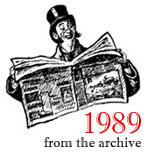
The Key Issue in the Middle East Conflict
DRAWING THE DIVIDING LINE — SOMEWHERE WEST OF THE JORDAN RIVER
No issue in the whole vast sweep of international affairs is more subject to anguished, often angry, debate than that of the Israeli/Palestinian conflict. Yet, in none of our public-policy discourses is it more urgent that we seek an honest and fair-minded facing of the facts — and a spirit of mutual respect and civility among those engaged in such a dialogue. The stakes for Israelis and Arabs, for Jews, Muslims and Christians, for Middle Easterners and Westerners — for anyone in any way concerned with this conflict — are enormous.
Moreover, the Middle East remains the most explosive, the most dangerous region in all the world, in terms of its potential for triggering a global catastrophe. It is also the site of what, in modern times, is one of the most painfully protracted struggles ever fought by two worthy peoples contending for one small piece of land — and on which each has a plausible and legitimate claim. The emotional linkages to the two sides produce, among their partisans, highly extravagant rhetoric about the issues, sharply differing perceptions of the issues, and seemingly irreconcilable “solutions” to what many have come to consider an utterly unresolvable struggle.
That struggle, since the outbreak of the Palestinian Uprising (the Intifada) on December 9, 1987, has been transformed into an even more hellish kind of disaster, as can be well documented by any of us who has lived through even a few months of this intensified daily, violent confrontation. The new level of struggle has brought indescribable suffering to the one and a half million Palestinians (under Israeli military occupation for more than 20 years), greatly expanded the repressive measures which the Israeli military itself labels its “Iron Fist” policy, provoked bitter debates within the deeply divided Israeli government and its youthful armed forces, seriously damaged the Israeli economy, and shocked, stunned, and confused millions of Israeli supporters, Jewish and non-Jewish, around the world.
It is no wonder that the reporting of the daily events of the uprising and the Israeli efforts to put it down should set off heated disputes. The contending views recently expressed in the pages of New Oxford Review (Dec. 1988 and March 1989) are but a mild reflection of the roaring global debate over media coverage of the Israeli/Palestinian conflict.
You May Also Enjoy
St. John of Damascus wrote two brief yet remarkable treatises against Islam, and he can be called first apologist to the Muslims.
If Muslim women in India can protest condomania culture, why can't Catholics do the same thing in the United States of America?
While mainstream journalists and academic talking heads exhibit a different kind of Islamophobia-- an inordinate fear of Islam-- they have no problems at all with shortchanging Christianity.

